What is an Eclipse: 7 Types of Solar and Lunar Eclipses Explained
What is an eclipse? An eclipse is one of nature’s most spectacular celestial events, occurring when one astronomical body moves into the shadow of another. This fascinating phenomenon happens when the Sun, Moon, and Earth align in such a way that one object blocks light from reaching another, creating dramatic shadows in space. These fascinating phenomena have captivated humans for thousands of years, inspiring both wonder and fear throughout history. Today, we understand eclipses as predictable astronomical events that occur due to the precise alignment of the Sun, Moon, and Earth.
What is an Eclipse: Understanding the Basic Mechanics
Eclipses happen because of the way light travels in straight lines and creates shadows. When a large object blocks light from a source, it creates two types of shadows: the umbra (complete shadow) and the penumbra (partial shadow). During an eclipse, one celestial body passes through the shadow cast by another, temporarily blocking or dimming the light we normally see.
The key to understanding eclipses lies in recognizing that the Moon orbits Earth, while Earth orbits the Sun. Occasionally, these three bodies align in such a way that shadows are cast, creating the dramatic events we call eclipses.
What is an Eclipse: Solar Eclipses Explained
A solar eclipse occurs when the Moon passes between Earth and the Sun, casting a shadow on Earth’s surface. From our perspective on Earth, it appears as if the Moon is “eating” the Sun. Solar eclipses can only happen during a new moon phase when the Moon is positioned between Earth and the Sun.
Types of Solar Eclipses
Total Solar Eclipse:
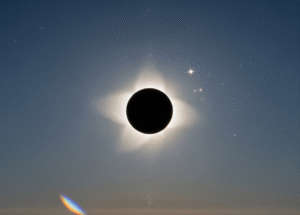
This occurs when the Moon completely covers the Sun’s bright surface, revealing the Sun’s corona (its outer atmosphere). The sky darkens dramatically, temperatures drop, and stars may become visible during daytime. Total solar eclipses are visible only from within the Moon’s umbra as it sweeps across Earth’s surface.
Partial Solar Eclipse:
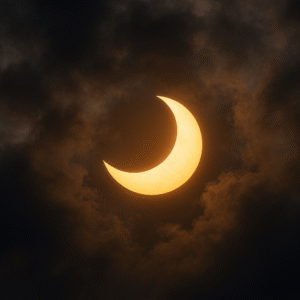
When the Moon only partially covers the Sun, observers see what looks like a “bite” taken out of the Sun. This happens when you’re in the penumbra of the Moon’s shadow. Partial eclipses are much more common and can be observed over larger areas.
Annular Solar Eclipse:
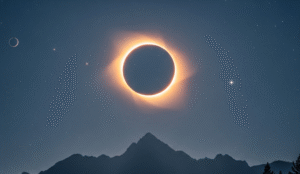
Sometimes called a “ring of fire” eclipse, this occurs when the Moon is farther from Earth in its orbit and appears smaller than the Sun. The Moon covers the Sun’s center but leaves a bright ring of sunlight visible around the edges.
Hybrid Solar Eclipse:
These rare eclipses appear as total eclipses in some locations and annular in others, depending on the observer’s position and the curvature of Earth.
What is an Eclipse: Lunar Eclipses Explained
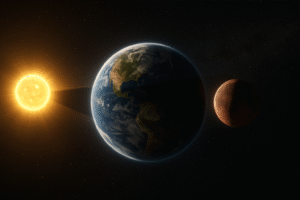
A lunar eclipse happens when Earth passes between the Sun and the Moon, casting Earth’s shadow on the Moon’s surface. Unlike solar eclipses, lunar eclipses are visible from anywhere on the night side of Earth where the Moon is above the horizon. They can only occur during a full moon phase.
Types of Lunar Eclipses
Total Lunar Eclipse:
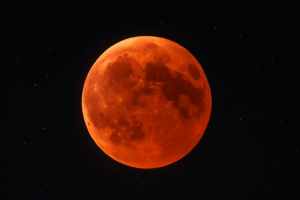
The Moon passes completely through Earth’s umbra, often giving it a reddish appearance. This red color occurs because Earth’s atmosphere bends and filters sunlight, allowing primarily red wavelengths to reach the Moon. This phenomenon is sometimes called a “Blood Moon.”
Partial Lunar Eclipse: Only a portion of the Moon enters Earth’s umbra, creating the appearance of a shadow taking a bite out of the Moon. The rest of the Moon remains in Earth’s penumbra and appears dimmed but still visible.
Penumbral Lunar Eclipse: The Moon passes only through Earth’s penumbra, causing a subtle dimming that’s often difficult to notice with the naked eye. These are the most common but least dramatic type of lunar eclipse.
Why Don’t Eclipses Happen Every Month?
Given that the Moon orbits Earth every 29.5 days, you might wonder why we don’t see eclipses monthly. The answer lies in the Moon’s orbital path, which is tilted about 5 degrees relative to Earth’s orbit around the Sun. This means the Moon usually passes slightly above or below the line connecting Earth and the Sun, missing the opportunity to create an eclipse.
Eclipses only occur when the Moon crosses the plane of Earth’s orbit (called the ecliptic) at the same time it’s in the new moon or full moon phase. These crossing points are called nodes, and eclipse seasons happen roughly every six months when the Sun is near these nodes.
Eclipse Safety and Observation
While lunar eclipses are completely safe to observe with the naked eye, solar eclipses require extreme caution. Looking directly at the Sun, even during a partial eclipse, can cause permanent eye damage or blindness. Special eclipse glasses, solar filters, or indirect viewing methods like pinhole projectors should always be used when observing solar eclipses.
Cultural and Historical Significance
Throughout history, eclipses have been interpreted as omens, signs from gods, or harbingers of significant events. Ancient civilizations developed sophisticated methods to predict eclipses, demonstrating remarkable astronomical knowledge. Today, eclipses continue to provide valuable scientific opportunities, allowing researchers to study the Sun’s corona during total solar eclipses and helping us better understand celestial mechanics.
Eclipses remind us of our place in the cosmic dance of celestial bodies, offering moments of wonder that connect us to both ancient observers and future generations who will witness these magnificent displays of cosmic geometry.

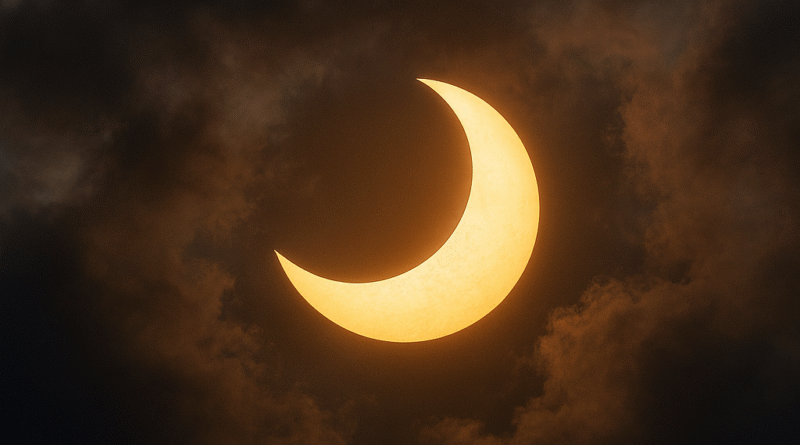
Pingback: Earth: 15 Incredible Facts About Our Pale Blue Dot - Astronomers